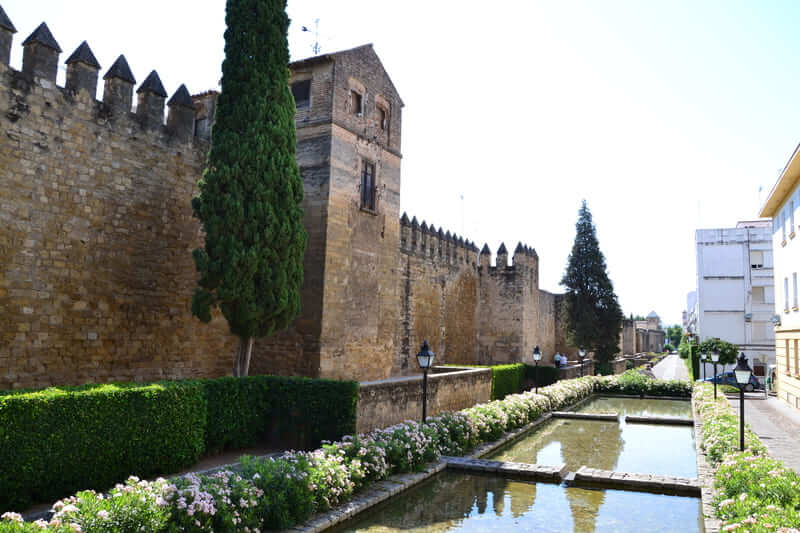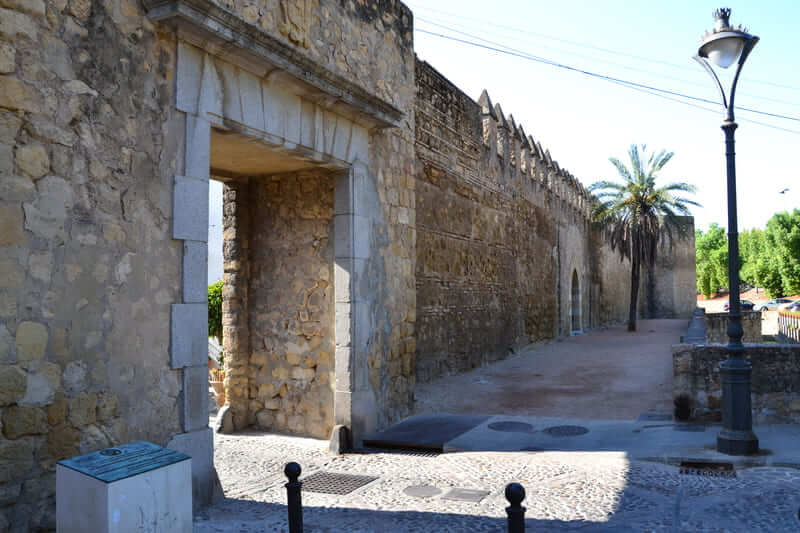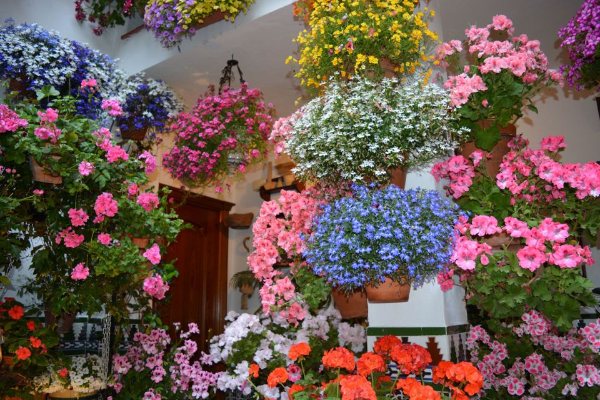Ancient City Walls in Cordoba
Imagine a prosperous city surrounded by towering walls. That was Cordoba in the Middle Ages! Throughout its history, this vibrant city has been protected by multiple layers of defense walls, each with its own story to tell.
These walls aren’t just about defense. In addition to their defensive function, these walls served an administrative purpose, as the government could control the movement of people – especially useful during epidemics – and goods, as merchants had to pay taxes.

However, in most cities, it is quite difficult to find original walls. Over the centuries, cities grew and walls were demolished to expand their perimeter. By the 19th century, these walls had lost their original function and almost all of them were demolished.
Broadly speaking, Cordoba has had 4 walls (Roman, two in the Muslim period, and the last one built in the Christian era), so these walls could almost be considered a history book written in stone.
The walls of Cordoba throughout history
Roman Era: The Romans founded the city of Cordoba, which became one of the most important cities in the empire.Therefore the first wall was built in the Roman era (2nd century). This primitive wall had 4 access gates.
Muslim Period: But the Muslims, known for their engineering prowess, really upped the ante. The Roman wall was in a rather poor state and the Muslims invested large sums of money in building two massive walls, one around the heart of the city (Medina) and another to protect the bustling neighborhoods outside (Axerquía).
Muslim rulers were truly obsessed with protecting Cordoba. Don’t forget the historical context. The Christian armies of northern Spain were advancing south and getting closer and closer to Muslim cities like Cordoba and Seville.

Christian Period In 1236, the Christians, during the reign of Ferdinand III, conquered Cordoba. Initially, the Christians rehabilitated and maintained the Muslim walls. However, approximately 150 years after the Christian conquest, three new walls were built to protect the Alcazar of the Christian Kings.
How were the city walls in Cordoba built?
The construction of the walls was undoubtedly a major engineering and logistical feat at the time. Imagine hundreds of workers and oxen hauling massive stones from quarries to the city
In the wall of Cordoba, large blocks of stone were used, generally sandstone and limestone. The stone blocks were carved and fitted together to form solid and resistant walls. To join the stone blocks, they used a mortar made of lime, sand, and water, which, once hardened, allowed the stone blocks to be held together.
How to visit the ancient city walls in Cordoba
Time takes its toll. Unfortunately, these walls were gradually demolished. The growth of the city over the centuries and the loss of its defensive and administrative function led most local governments in Spain to demolish their walls to expand the cities.
But thankfully, some sections have survived, offering a glimpse into Cordoba’s past.
Let’s explore some of the remaining walls and gates:
Walls of the Medina (Muslim era)
The best-preserved section is located on Cairuán Street. This section, which protected the heart of Cordoba (Medina), preserves 7 defensive towers and even one of the original access gates to the city (Almodóvar Gate).
Walls of the Axerquía (Muslim era)
Near Plaza de Colón, a small section of the wall is preserved. Undoubtedly, the highlight here is the impressive Tower of the Malmuerta (see link), although this tower was built in the Christian era.

Christian Walls
Built in the 14th century, the most interesting part is located near Avenida Vallellano. This part even preserves the Seville Gate, which was used by travelers heading to Seville.
Gates of the city walls in Cordoba
Although most of Cordoba’s walls and gates were demolished in the 19th century to favor urban growth, some of the gates still remain.
Cordoba had up to 18 access points throughout its history, including gates and wickets.
Gates were open until 10:00 pm – 11:00 pm, although there were always soldiers and they could open the gates in the middle of the night if necessary. In addition, these gates were also used as customs points. Merchants coming to Cordoba had to enter through one of these gates to pay taxes.
Wickets were smaller, only used by people (goods entered through the gates) and closed in the late afternoon. This meant that if a person arrived at a postern in the middle of the night, no one could open it.
Of these 18 gates and wickets, only 5 remain (some of them in ruins).

Which gates can you visit in Cordoba?
Want to visit some of these original gates, follow our recommendations!
There are 3 gates that are preserved in really good condition. These are the Puerta del Puente, Puerta de Almodóvar, and Puerta de Sevilla.
Puerta del Puente: Built in the 16th century (Renaissance style), this gate was built to commemorate the visit of the all-powerful King Philip II to the city. Although this gate was built in the 16th century, there were other gates in the same place in Roman and Muslim times.
Puerta de Almodóvar: Without a doubt, this is our favorite, as it is the oldest gate and the only one that preserves almost intact its medieval style. The Almodóvar Gate was part of the Muslim wall, however, in the 14th century, the Christians built a new gate which is the one we can admire today. This gate gave access to the old Jewish quarter. The best part is that besides the gate, we can also see remains of the original wall along Calle Cairuán. By the way, very close to the Puerta de Almodóvar you can also visit the beautiful Synagogue of Cordoba, one of the few medieval synagogues that remain in Spain, as most were destroyed after the expulsion of the Jews from Spain in 1492.
Puerta de Sevilla: Perhaps this is the least interesting of the preserved gates. It was built in the 14th century (Christian era) and gave access to the beautiful neighborhood of San Basilio. This gate was the most convenient exit from the city for those locals who had to travel to Seville, hence its name “Puerta de Sevilla”. Next to the Puerta de Sevilla, a sculpture of the famous Muslim historian and philosopher Ibn Hazm (born in Cordoba in 994) was placed.
Arco del Portillo: Surprisingly, Cordoba also preserves one of these wickets in relatively good condition. The Arco del Portillo was built in the Muslim era and was part of the wall that divided the Medina (heart of the city) from the Axerquía (popular neighborhoods that surrounded the center of the city). However, the gate that can be visited today was rebuilt in the 14th century (Christian era).
So, If you visit our city, take a moment to appreciate these ancient walls. They’re more than just stones; they’re living witnesses to a city’s rich and complex history.
Useful Information: City walls in Cordoba
Address:
Old town (different locations)
Price:
Public space
Built in:
Middle Ages
Opening Hours:
-











